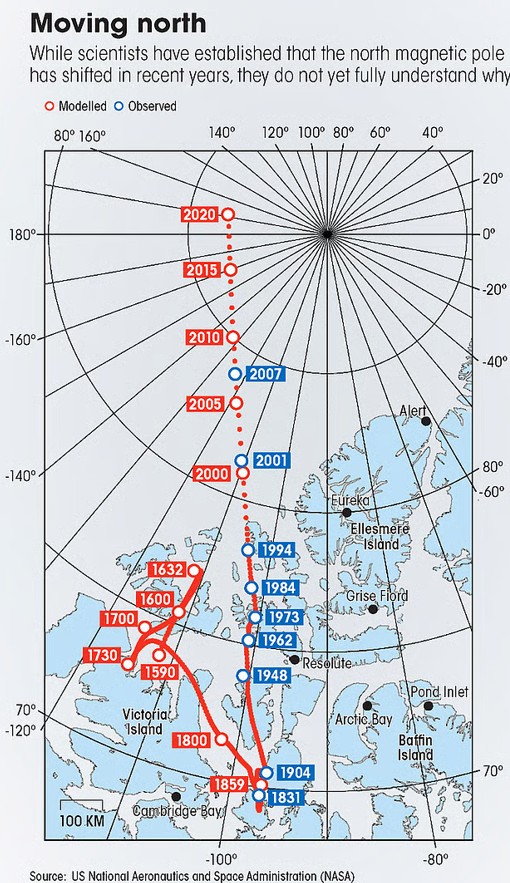Why in the News?
In 2024, a soundtrack was released inspired by the Laschamps event, a magnetic flip-flop that occurred 41,000 years ago when Earth’s magnetic field weakened to just 5% and the poles briefly reversed.

What is Magnetic Flip-Flop?
- Definition: A magnetic flip-flop is when Earth’s magnetic poles reverse, with the north and south poles switching places.
- Magnetic Field Source: Earth’s magnetic field is generated by the movement of molten iron in the outer core, acting like a giant magnet.
- Reversal Types:
- A long-term change is called a geomagnetic reversal.
- A short-lived, temporary switch is a geomagnetic excursion.
- Field Behavior: During a reversal, the magnetic field weakens significantly and the direction of field lines flips.
- Occurrence: These events are irregular and unpredictable.
Recent Magnetic Reversals and Excursions:
- Last Major Reversal: The Brunhes–Matuyama reversal occurred about 780,000 years ago.
- Known Excursions:
- Norwegian-Greenland Sea event (~64,500 years ago)
- Laschamps excursion (~41,000 years ago), when field strength dropped to 5% of today’s level
- Mono Lake excursion (~34,500 years ago)
- Indian Evidence: Excursions found in Uttarakhand (Bagwalipokar), dated to 15,500–14,700 years and 8,000–2,850 years ago.
- Pole Movement: Since 1831, the north magnetic pole has shifted 1,100 km toward Siberia and now moves at 35 km/year, while the south pole is more stable.
Implications of Magnetic Flip-Flop:
- Radiation Exposure: A weaker magnetic field during flip-flop allows more cosmic radiation, affecting:
- Satellites and astronauts
- Navigation and communication systems
- Power grids and electronics
- Protective Shield: Earth’s atmosphere still protects against harmful radiation even when the magnetic field is weak.
- Climate & Ozone Effects: Events like Laschamps may have altered the ozone layer and climate, but no confirmed link to mass extinctions.
- South Atlantic Anomaly: A current weak-field region affecting spacecraft over South America and South Africa.
- Monitoring Tools: Scientists use satellites, ice cores, volcanic rocks, and geomagnetic observatories to track field changes.
- Global Guidance: The World Magnetic Model, updated every 5 years, supports navigation systems worldwide.
- Prediction Outlook: Though timing of future reversals is uncertain, computer models and cosmic data are improving forecasts.
| [UPSC 2017] Consider the following statements:
1. The Earth’s magnetic field has reversed every few hundred thousand years. 2. When the Earth was created more than 4000 million years ago, there was 54% oxygen and no carbon dioxide. 3. When living organisms originated, they modified the early atmosphere of the Earth. Which of the statements given above is/are correct? Options: (a) 1 only (b) 2 and 3 only (c) 1 and 3 only * (d) 1, 2 and 3 |
Get an IAS/IPS ranker as your 1: 1 personal mentor for UPSC 2024

